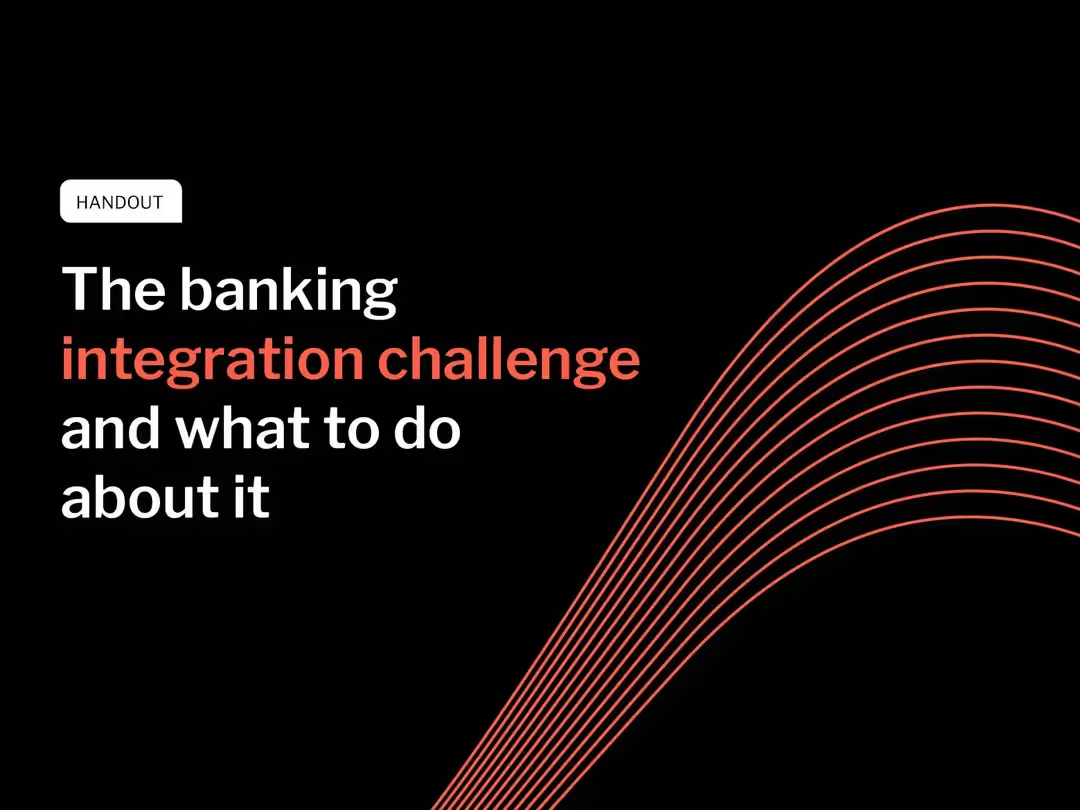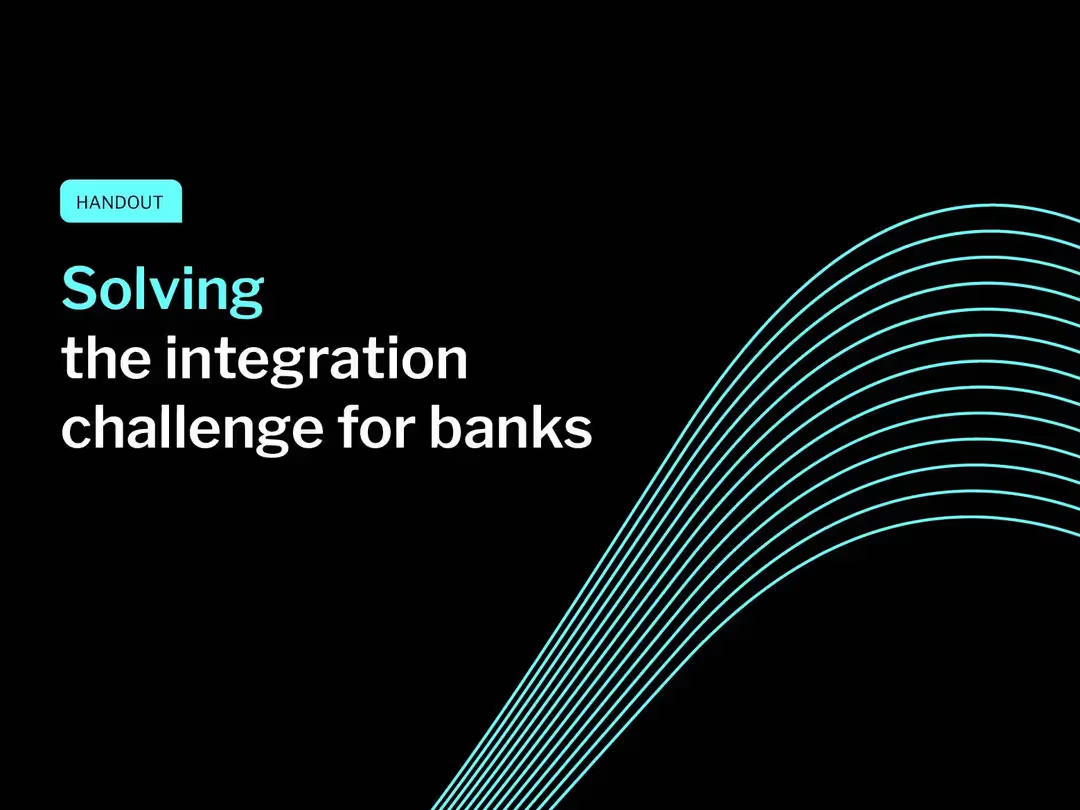Introduction
In today's complex technology landscape, as pointed out by McKinsey, banks face crucial decisions about how to implement their integration strategy. This guide examines major solutions to banking integration, analyzing their strengths, weaknesses, and ideal use cases. We list below the main vendors in an alphabetical order.
1. Dell Boomi
Pros
- User-friendly interface
- Strong support for hybrid environments
- Cost-effective for mid-sized enterprises
Cons
- Limited advanced data transformation features
- Less robust for large-scale banking needs
- No-banking specific expertise
2. Google Apigee
Pros
- Best-in-class API management
- Excellent scalability
- Strong developer support
Cons
- High cost
- Less focus on banking-specific needs
- Limited to API management capabilities
3. Grand Central by Backbase
Pros
- First IPaaS designed for banks
- Best-in-class digital banking orchestration, seamless customer journey integration
- Wide range of out-of-the-box features and capabilities
- 20 integrated partner products to enhance the offering
- Unified data model according to BIAN industry standard
Cons
- Pro-code platform
- Designed for professional development & some upskilling required, but Backbase provides training
Explore Grand Central by Backbase.
4. IBM App Connect
Pros
- Strong integration with IBM ecosystems
- Enterprise-grade capabilities
Cons
- Steep learning curve
- Limited third-party ecosystem
- Limited to API management
5. Kinective
Pros
- Pre-built integrations and connectors specific to banking
- High standards of encryption and access control
Cons
- May require additional development for highly customized or niche banking systems
- Implementation mapping can get complex
6. MuleSoft
Pros
- Industry-leading API management
- Extensive support for complex integrations, strong ecosystem
Cons
- High cost
- Steep learning curve
- Limited banking-specific templates
7. Oracle Integration Cloud
Pros
- Excellent for Oracle systems
- Strong security and governance features
Cons
- Steeper learning curve for non-Oracle users
- Higher cost for enterprise use
- Limited banking-specific expertise
8. Portx Fintech Hub
Pros
- Modern cloud-native platform
- Strong focus on community banks and credit unions
- Excellent customer support
Cons
- Limited scalability for large enterprise banks
- Smaller ecosystem compared to larger players like Backbase or Kinective
9. SAP Integration Suite
Pros
- Seamless integration with SAP products
- Strong enterprise-grade features
Cons
- Limited flexibility for non-SAP environments
- No-banking specific expertise
10. Workato
Pros
- No-code/low-code features
- Strong focus on usability
- Fast deployment
Cons
- Limited capabilities for highly complex integrations
- Smaller ecosystem compared to competitors
- Limited banking-specific expertise
11. WSO2
Pros
- Open-source flexibility
- Cost-effective
- Strong security features
Cons
- Requires significant customization
- Limited out-of-box banking support
- Limited to API management
Making the right choice
Each integration approach offers distinct advantages and trade-offs. The key is to align the chosen approach with your bank's specific needs, technical capabilities, and long-term digital transformation strategy. Consider starting with a pilot project to validate your chosen approach before committing to a full-scale implementation. The key piece of advice is to choose a platform provider that empowers you to innovate at your own pace and on your own terms. Look for one that doesn’t restrict your potential but provides access to a comprehensive ecosystem of top-tier integrations. Beyond just a vendor, your bank requires a genuine strategic partner that will deliver long-term value.
Frequently asked questions (FAQs)
1. What is anspecifically made for banking?
A banking specific IPaaS is a cloud-based solution that enables banks and financial institutions to connect different applications, systems, and data sources without the need for complex custom coding. It provides pre-built connectors specific to banks’ needs, automated workflows and unified data models based on standards of the banking industry like BIAN.
2. What is a pro-code platform?
A pro-code platform is a software development environment designed for professional developers, offering full coding flexibility and control. Unlike low-code or no-code platforms that emphasize visual development and pre-built components, pro-code platforms provide robust coding environments, frameworks, and APIs that allow banks to customize and scale on their own terms.
3. What is a low-code/no-code platform?
Low-code or no-code platforms are software development environments that require minimal to no hand-coding. They are designed for citizen developers and business users and they empower non-technical teams to create functional applications quickly and efficiently.
4. What is an API manager?
An API Manager is a software solution that helps banks create, monitor, and manage APIs throughout their lifecycle. It acts as a gateway between API providers and end-users, ensuring seamless integration, security, and performance optimization.






